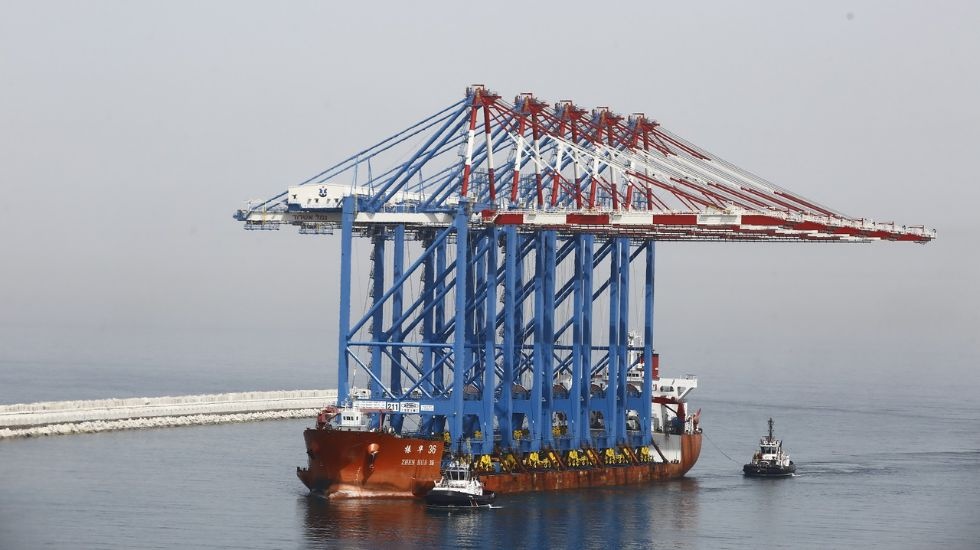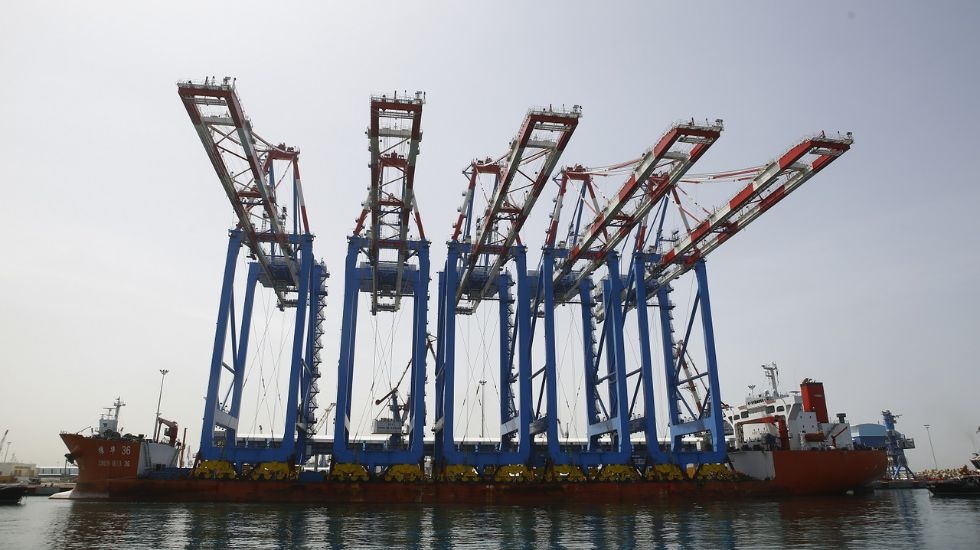
סיפורנו עוסק בתביעת שיבוב שהגישה חברת הביטוח הפניקס בבית משפט השלום בחיפה כנגד חברת הספנות אוורגרין לקבלת פיצוי בגין נזק שאירע למטען של מבוטח של הפניקס, שהובל מאינדונזיה לישראל.
בעקבות הגשת התביעה, הגישה חברת הספנות בקשה לבית המשפט לסלק את התביעה על הסף ולחילופין לעכב את ההליכים בתיק. הטעם לכך – משום שבהסכם ההובלה שבין חברת הספנות לבין השוגר והנשגר הופיע סעיף שיפוט ייחודי, אשר מקנה סמכות שיפוט בלעדית לבית המשפט המוסמך בלונדון. לכן, טענה אוורגרין, לא ניתן להמשיך ולנהל את התיק בחיפה, בשעה שהצדדים הסכימו לכך שסכסוכים הנוגעים להובלה יידונו בלונדון, רק בלונדון, ולא בחיפה או בכל מקום אחר.
בית המשפט קיבל את טענת אוורגרין והורה על עיכוב הדיון בתביעה. החלטת בית המשפט התייחסה למספר סוגיות שנבקש להרחיב בהן במאמר הזה.
נספר כמה מילים על ענייני סעיפי השיפוט. תוקפם של סעיפי שיפוט שכאלו נובע מהסכמת הצדדים, ובית המשפט מכבד הסכמים שנעשו בין הצדדים, לרבות סעיפי שיפוט. ״אם הצדדים החליטו שהסכסוך יידון בבית המשפט באנגליה, או שהחליטו שהסכסוך יידון בבוררות בצרפת, או שהחליטו שהסכסוך יידון בכל מקום בעולם, אבל לפי הדין הפולני, אני – אומר בית המשפט – ארצה לכבד את הסכמות הצדדים״.
רק בנסיבות מיוחדות יסטה בית המשפט מהסכמת הצדדים. בפסיקת בתי המשפט בישראל נקבע כי מדובר במקרים חריגים, כגון מקרים שבהם היענות לסעיף השיפוט יוביל לכך שהתובע לא יוכל לזכות למשפט צדק שבה יידון הסכסוך בשל אפליה גזעית או דתית, או כאשר התביעה צפויה להידחות באותו מקום בשל התיישנות.
בענייננו, הורה בית המשפט על ״עיכוב ההליכים בתביעה זו, בכפוף לכך שלא תחול התיישנות על תביעת התובעת ומכל מקום הנתבעת תהא מנועה מלטעון טענת התיישנות, וזאת בתנאי שהתובעת תגיש תביעתה כנגד הנתבעת בפורום המוסכם בהתאם לתניית השיפוט״.
נחזור לדיון בעניין סעיפי השיפוט: חשוב גם להבין מה היתה בדיוק הסכמת הצדדים. האם סעיף השיפוט מקנה סמכות שיפוט ייחודית לבית המשפט הזר, ואז לא יהיה מנוס מעיכוב הדיון בישראל, או שסעיף השיפוט מקנה סמכות מקבילה לבית המשפט הזר, אך לא שולל את סמכותו של בית המשפט בישראל, ואז, כמובן לא יעוכבו ההליכים.
ראו לדוגמא את נוסח הסעיף הזה שנידון באחד מפסקי הדין של בית המשפט העליון:
This Agency Agreement is subject to Swiss law; the obligation of both parties are, however, limited to the undertakings expressly set forth in the agreement. Any disputes will be settled in the courts having jurisdiction over Winterthur”..
על זה ציין בית המשפט העליון כי מדובר ב״תניית שיפוט ייחודית, שלפיה הסמכות לדון בתביעות הצדדים להסכם מסורה לבית המשפט ב-Winterthur, שווייץ. אכן, בתניית השיפוט לא הוספו המילים ״בלבד״ או ״רק״ או דומותיהן, אך נדמה שניתן להבחין כי היא כוללת את אותו ״נוסח פעיל״, ברור ומפורש, שבצד החלתו של הדין השווייצרי גם קובעת שכל הסכסוכים הנובעים מההסכם ייושבו בבית המשפט ב-Winterthur. כאמור, אין בתניה שלילה מפורשת של סמכות בית המשפט בישראל, אך אין צורך בשלילה מפורשת שכזו במקום שלשון התניה החלטית ואינה מותירה מקום לספקות. ודוק: בסעיף לא נאמר ״שלבית המשפט ב-Winterthur תהיה סמכות...״, אלא נאמר שכל הסכסוכים ייושבו שם, ונוסח זה מעיד יותר מכל שהכל הסכימו בעת כריתת ההסכם להעניק סמכות ייחודית לבית המשפט בשווייץ.
סוגיה אחרת שאליה הקדיש בית המשפט מקום נרחב היא הטענה של חברת הביטוח שסעיף השיפוט הזר הופיע בסעיף 29 של ״תנאי ההובלה״, אך מסמך זה של ״תנאי ההובלה״ לא היה מצוי ברשותם של מקבלי המטען והם לא ידעו את תוכנו. השאלה היא האם הפנייה לסעיף שיפוט שנמצא מחוץ לשטר המטען, במקום אחר, היא תקפה ומחייבת את השוגר והנשגר, או שקיימת חובה שסעיף השיפוט יופיע על גבי שטר המטען עצמו?
בית המשפט דחה את טענת חברת הביטוח. בית המשפט ציין כי אמנם בצדו הקדמי של שטר המטען לא מפורטים כל ״תנאי ההובלה״, בהיעדר מקום לפרטם במלואם בעמוד אחד, אך, מצד שני, קיימת הפניה אל ״תנאי ההובלה״ ואל העובדה כי הם מחייבים ומהווים חלק מחוזה ההובלה. ״ההפניה מופיעה אמנם באופן תמציתי, ובכתב קטן, כמקובל בשטרי מטען, וכמתבקש מאופיו של שטר מטען כמסמך שעליו לפרט בראש ובראשונה ״תנאים מיוחדים״ של פרטי ההתקשרות (שוגר, נשגר, מטען, וכו׳), אולם היא ברורה די הצורך, ואין כל אפשרות כי צד לשטר המטען יוכל להימנע מן המסקנה המתבקשת כי בצד התנאים המיוחדים המפורטים בצדו הקדמי של שטר המטען, חלים גם ״תנאים כלליים שאינם מצויים בצד הקדמי אך מהווים חלק מחוזה ההובלה״, הסביר בית המשפט.
ומה לגבי הטענה של השוגר והנשגר שגם אם היתה הפנייה אל סעיף שיפוט חיצוני, וגם אם ההפניה אל סעיף השיפוט החיצוני היא תקפה -עדין הם לא קראו את הסעיף החיצוני ולא הסכימו אליו? על כך השיב בית המשפט כי ״צד לחוזה שלא טרח לעיין בתנאים כלליים אליהם מפנה החוזה, אף שיכול היה לעיין בו, לא יוכל להלין אלא על עצמו״. ועוד הוסיף בית המשפט כי ״אין זה משנה אם ׳תנאי ההובלה׳ מופיעים על גבי צדו האחורי של שטר המטען, כפי שהיה נהוג במקרים אחרים בעבר, או שהם מצויים במסמך נפרד, שהחוזה מפנה אליו, ובלבד שניתנה האפשרות לעיין בהם, וזהו המבחן העיקרי שיש לגזור מן הפסיקה הענפה שניתנה בהקשר זה בעבר״. ועוד ציין בית המשפט: ״אין הבדל של ממש בין צד לשטר מטען אשר נמנע מלעיין ב׳תנאי ההובלה׳ המופיעים מצדו האחורי, לצד לשטר מטען אשר נמנע מלעיין בתנאי ההובלה המופיעים באתר אינטרנט של המוביל הימי״.
ומה היה קורה אילו ההפנייה אל סעיף השיפוט החיצוני היתה משובשת? מה היה קורה אילו, למשל, היתה נעשית הפנייה לאתר האינטרנט של חברת הספנות, אך באתר האינטרנט לא היה ניתן לראות את סעיף השיפוט הזר? זה כבר סיפור אחר: ״אילו היה מוכח כי במועד זה לא היו ׳תנאי ההובלה׳ זמינים לעיון מקבלי המטען (או שהופיע שם נוסח שונה של תנאי הובלה, וכיו״ב), לא היה מקום לראות במקבלי המטען כמי שמוחזקים כי קראו את תנאי ההובלה״, הסביר בית המשפט. אך במקרה הספציפי שלנו לא כך היו העובדות: ״התובעת נמנעה במפגיע מלטעון כל טענה בהקשר זה בתצהיר התומך בתשובה, ומן הסתם לא בכדי״, ציין בית המשפט.
סוגיה אחרונה שנרצה לעסוק בה, שלא נותחה בפסק הדין, היא השאלה האם יש משמעות לכך שסעיף השיפוט, או כל סעיף אחר שבשטר המטען, מופיע באותיות קטנות ביותר שכמעט ולא ניתן לקרוא אותם, ללא הגדלה משמעותית. האם יש בכך שהסעיף לא קריא באופן מיידי, כדי לפסול אותו?
הסוגיה נידונה בעבר במספר פסקי דין של בית המשפט העליון, ונקבע כי קיימים שני שיקולים שעל פיהם יתבצע הדיון בסוגיה הזאת.
השיקול הראשון הוא מידת הצפייה הסבירה שתניית שיפוט ייחודית תימצא בשטר המטען. בית המשפט העליון הסביר ש״טבעי הוא כי בשטר מטען המנוסח והמודפס על ידי חברת שיט, השולחת אניותיה לרחבי תבל, תבקש החברה להגן על האינטרסים שלה ולא תרצה להתדיין בכל נמל אפשרי בו תעגונה אניותיה, אלא תרצה להתדיין במקום הנוח לה״. הדברים הם כך ביתר שאת, כאשר כל ראייה שהבנק (או היבואן) לא ידעו על קיומה של תניית השיפוט או שהתעניינו בכך; לא כל שכן שאפשר היה במאמץ סביר לגלות ששטר המטען כולל תניית שיפוט״.(רע״א 4228/97 Empresa Lineas Maritimas Argentinas S.A. נ׳ קונטיננטל חברה לביטוח ימי בע״מ). ככל שסביר לצפות שיופיעה בשטר המטען סעיף שיפוט זר - כך יינתן תוקף לסעיף זה גם אם הוא מופיע באותיות קטנות.
השיקול השני הוא האם מדובר בהתקשרות בין צדדים שווים אם לאו. בית המשפט העליון קבע כי יש להבחין בין התקשרויות בין צדדים שווים, כגון חברות כלכליות גדולות וגופים עסקיים המכלכלים את צעדיהם על יסוד מידע ושיקולים רציונליים לבין הסכמים הנערכים בין צרכנים פרטיים מול חברות בינלאומיות. לכן, באחד המקרים, ״זכה״ בנק ישראלי, שדרכו היתה לעסוק בשטרי מטען, להערת גינוי כאשר טען לביטולה של תניית שיפוט בלתי קריאה ובה קביעה של סמכות ייחודית לבית משפט זר, מה שאין כן כשהיה מדובר בחוזה השכרת רכב שנערך בין חברה להשכרת רכב לבין צרכנית. בית המשפט העליון ציין כי אילו הוא היה מקבל את הטענה של חברת ביטוח שהיא רשאית להשתחרר מתניית השיפוט הבלתי קריאה בשטר המטען, שעל יסודו היא תבעה, ״היה עלינו לפסול כמעט את כל שאר תניות שטר המטען שהן אינן יותר קריאות מתניית השיפוט, והרי זו תוצאה שאינה מתקבלת על הדעת״.
המסקנה היא שככל שמדובר בשוגר/נשגר שהינם חברות שעוסקות ביבוא ויצוא ומורגלות בענייני הובלה בינלאומית - יקשה עליהן עד מאוד להשתחרר מסעיף שיפוט זר בטענה של ״אותיות קטנות״. שונה הדבר אם יהיה מדובר בשוגר/נשגר שהינו אדם פרטי, או עסק שהחל לעסוק בסחר בינלאומי. באותו מצב ייתכן שהוא ימצא אוזן קשבת בבית המשפט.
הסקירה לעיל הינה בבחינת תמצית. המידע הכלול בה נמסר למטרות אינפורמטיביות בלבד ואין במידע כדי להוות ייעוץ משפטי. לקבלת פרטים נוספים, אנא פנו לעו״ד גיל נדל - ראש תחום יבוא, יצוא וסחר בינלאומי במחלקת מיסים ותגמול בכירים. בדוא״ל Gill.Nadel@goldfarb.com ו/או בטלפון 03-6089979.
פורסם באתר port2port

).png)
.png)


















